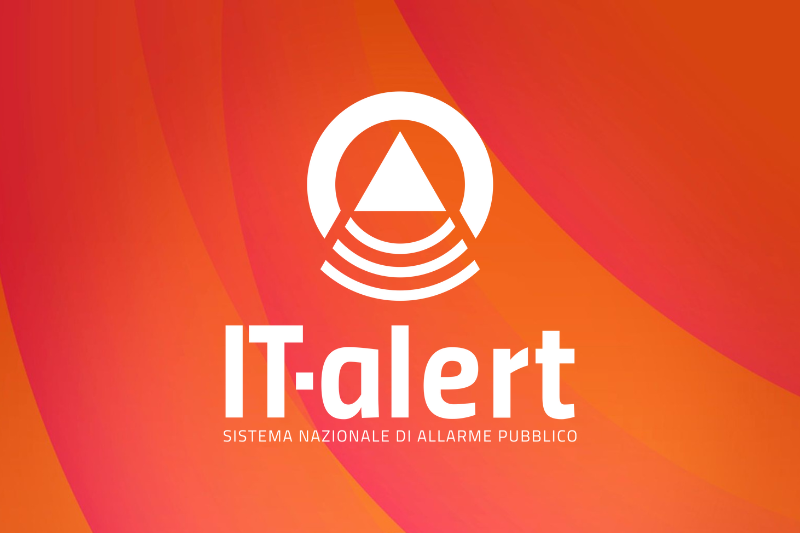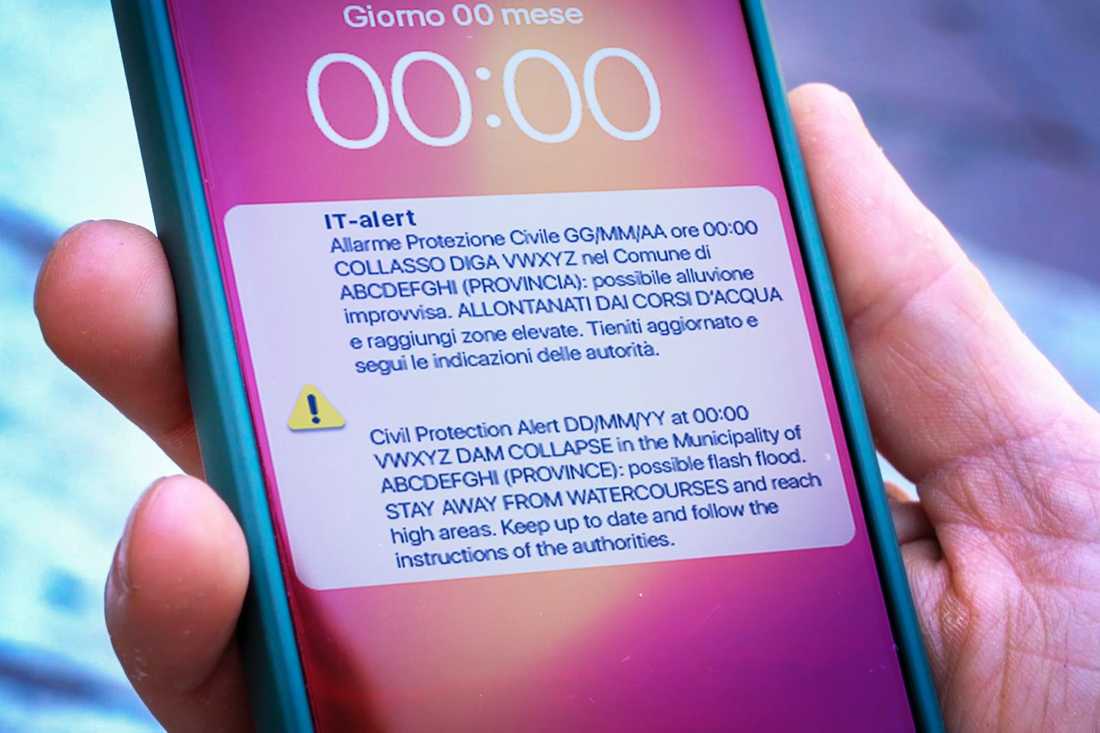IT alert, new test simulating the collapse of a large dam in the Veneto Region
On July 18, operations will involve the La Stua dam and the provinces of Treviso and Belluno.
(last update July 17, 2024 at 10.40 a.m.)

On July 18, at 12 p.m., a test of the IT-alert public warning system simulating the collapse of a large dam will be performed in the Veneto Region. It will primarily affect the Provinces of Treviso and Belluno.
The test will simulate the collapse of the La Stua dam, and the test message will arrive on the switched-on and connected cell phones of residents located in the downstream municipalities that would be affected in a real emergency:
▪ municipalities of Borgo Valbelluna (BL), Cesiomaggiore (BL), Crocetta del Montello (TV), Feltre (BL), Giavera del Montello (TV), Moriago della Battaglia (TV), Nervesa della Battaglia (TV), Pederobba (TV), Segusino (TV), Sernaglia della Battaglia (TV), Setteville (BL), Valdobbiadene (TV), Vidor (TV), Volpago del Montello (TV).
For the collapse of a large dam scenario, the notification text that the affected population will receive will read as follows:
TEST TEST IT-alert test message. There is an ongoing SIMULATION of a dam collapse in the area where you are. To learn what message you will receive in case of real danger, go to www.it-alert.gov.it/en TEST TEST
During the days of the tests, citizens will be able to access a dedicated page from the website's homepage. This page will contain the text of the message that will be sent in case of a real danger, along with a link to a survey. Citizens in the affected areas are encouraged to fill out the survey, even if they do not receive any notification.
The public warning system has been operational for this specific risk since February 13, 2024. However, periodic testing is still required to optimize its effectiveness. These tests are essential to improve the technology, maintain attention to the risk, and raise awareness among the population.
If users receive an IT-alert message with the word "TEST," it means that a verification of the system's functionality is in progress. This is necessary to ensure that messages will be sent from the phone cells and received by the devices in the target areas during a real emergency.
"Collapse of a large dam" refers to the collapse of the dam structure itself or the occurrence of damages to the dam or landslides that lead to the uncontrolled release of water, such as to reasonably assume the occurrence of a catastrophic event, which generally causes a flood wave and the subsequent flooding of downstream areas. Large dams are regulated by the Directive of the President of the Council of Ministers of July 8, 2014, on "Operational guidelines concerning civil protection activities within basins where large dams are present."
When a risk related to the structural strength of a large dam occurs, it is referred to as "dam risk," which entails four alert phases (pre-alert, reinforced alert, danger, and collapse).
Each dam is required to have a Civil Protection Document (DP), which defines the specific conditions for the activation of the civil protection system, communications, and technical-administrative procedures to be implemented in case of risk, and a Dam Emergency Plan (DEP), which outlines the areas potentially affected by the flood wave, operational strategies, and the intervention model to face the emergency.
IT-alert would be activated in case of collapse of a large dam, that is, a retaining structure exceeding 15 meters in height or resulting in a reservoir volume exceeding 1,000,000 cubic meters.

In case of real danger from a large dam collapse, cell phones in the municipalities potentially affected by the flood wave will receive such an IT-alert message:
Civil Protection Alert DD/MM/YY at 00:00 - XYZ DAM COLLAPSE in the Municipality of XYZ (PROVINCE): possible flash flood. STAY AWAY FROM WATERCOURSES and reach high areas. Keep up to date and follow the instructions of the authorities.
However, there may be devices present in areas affected by the emergency that will not receive the message. This is caused by one of the limits of cell-broadcast technology: the impossibility of perfectly overlaying the area potentially affected by the emergency with the area covered by the antennas of the telephone operators used to send the messages.